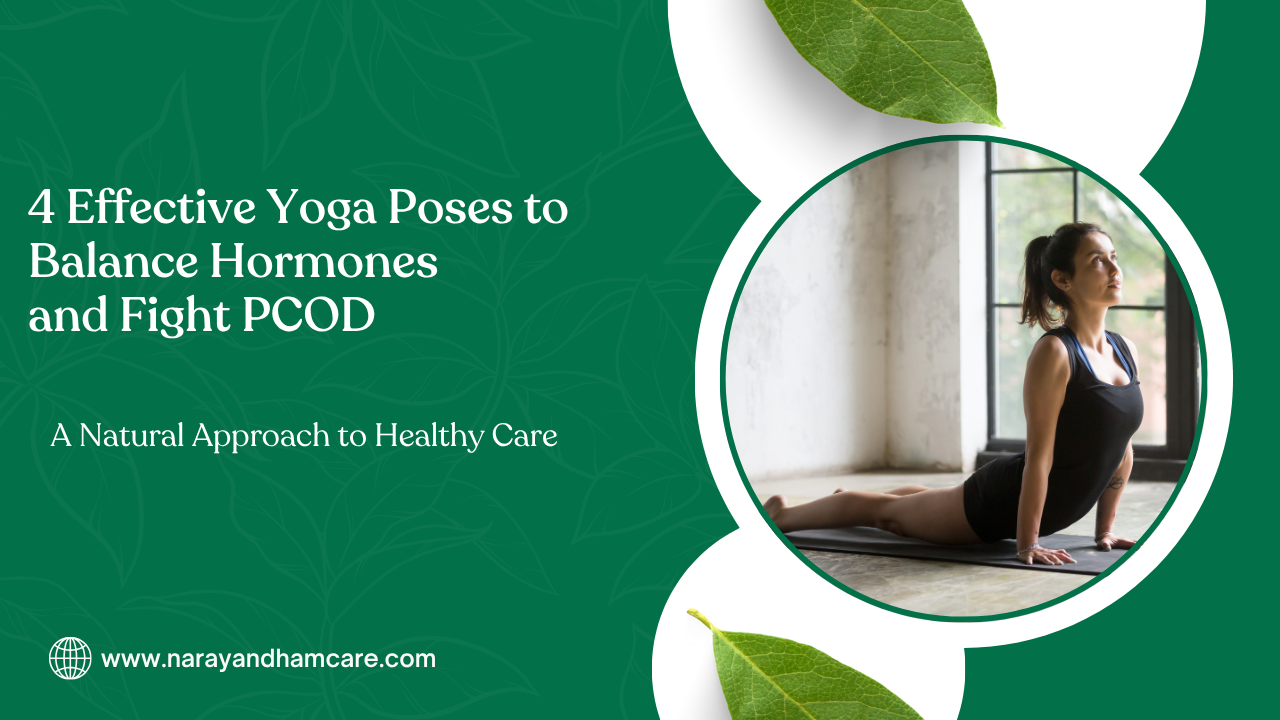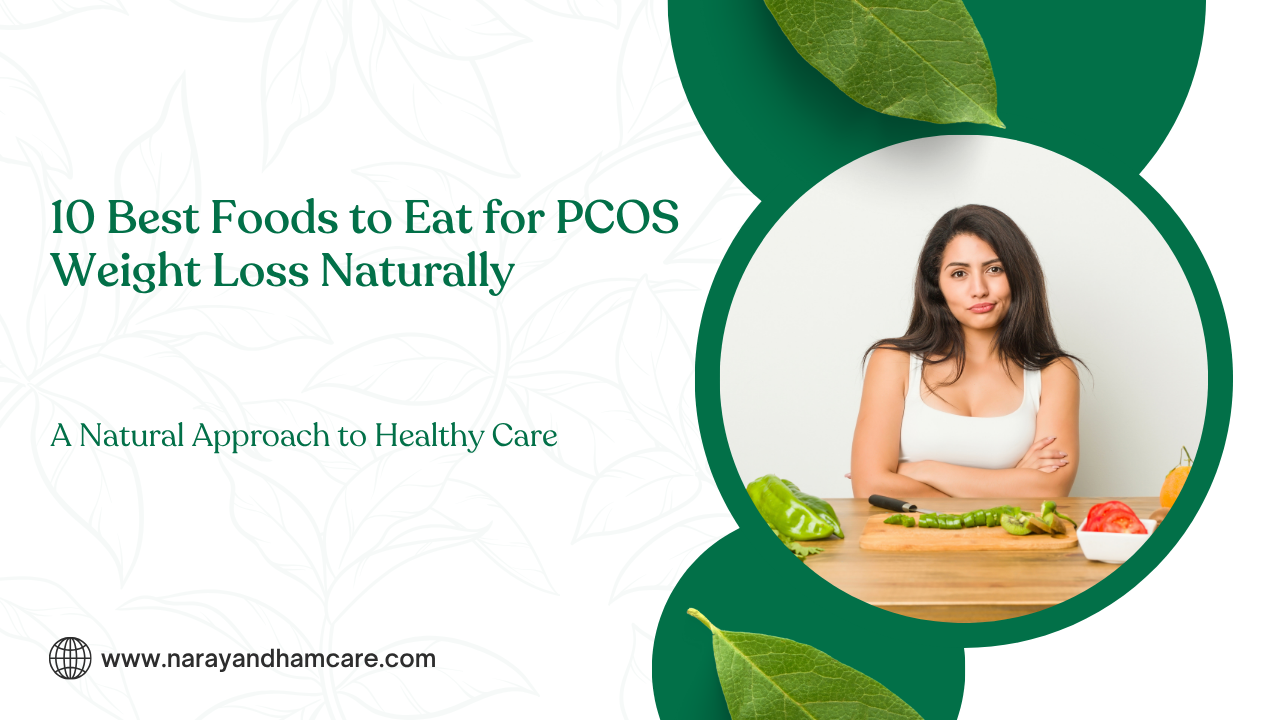Introduction of PCOD
Do you feel tired, gain weight easily, or have irregular periods? You may be facing(Polycystic Ovarian Disease). This is a very common health problem in women today. It happens when the hormones in your body go out of balance. But don’t worry. The good news is — you can treat naturally. One of the best natural ways is yoga.
Yoga for simple, safe, and effective. It helps your body relax, balances hormones, and improves overall health. In this blog, we will share 4 powerful yoga poses that can help treat PCOD naturally and bring back hormonal balance.
Problem: What is PCOD and Why Is It a Big Issue?
PCOD (Polycystic Ovarian Disease) is a condition where a woman’s ovaries produce many small cysts (fluid-filled sacs). These cysts disturb the natural hormone balance. Women with PCOD often have more male hormones (androgens), which leads to several health problems.
Who does PCOD affect?
mainly affects:
- Teenage girls and women of reproductive age (12 to 45 years)
- Women with unhealthy lifestyles
- Women with stress, poor diet, or lack of exercise
Why is PCOD dangerous?
If not treated early, PCOD can lead to:
- Irregular periods
- Infertility (trouble getting pregnant)
- Weight gain
- Mood swings
- Diabetes
- Hair loss and acne
Symptoms
Here are the common signs that you might:
- Irregular or missed periods
- Weight gain, especially around the belly
- Acne and oily skin
- Hair thinning or hair fall
- Facial hair growth (on chin, upper lips)
- Tiredness and low energy
- Trouble getting pregnant
If you notice 2 or more of these symptoms, you should talk to a doctor. But along with medical advice, doing yoga daily can bring amazing changes.
Solution: 4 Best Yoga Poses for Hormonal Balance
Here are 4 simple yoga asanas you can do every day to balance hormones and fight naturally.
1. Bhujangasana (Cobra Pose)
This pose helps to stimulate the ovaries, open up the chest, and boost blood flow to pelvic organs.
How to do it:
- Lie flat on your stomach.
- Place your hands under your shoulders.
- Inhale and lift your chest while keeping elbows slightly bent.
- Look up gently and hold the pose for 20-30 seconds.
- Breathe normally and slowly come back down.
Benefits:
- Stimulates reproductive organs
- Improves digestion
- Relieves stress and fatigue
2. Supta Baddha Konasana (Reclining Butterfly Pose)
This is a relaxing pose that opens up the hips and balances reproductive hormones.
How to do it:
- Lie on your back.
- Join your feet together and let your knees fall out to the sides.
- Keep your hands beside your body or on your belly.
- Stay in this pose for 1-2 minutes while breathing deeply.
Benefits:
- Reduces menstrual pain
- Balances hormonal function
- Calms the mind
3. Dhanurasana (Bow Pose)
This powerful pose works on the abdomen and reproductive organs. It also helps with weight loss and hormone balance.
How to do it:
- Lie on your stomach.
- Bend your knees and hold your ankles with your hands.
- Inhale and lift your chest and legs off the ground, forming a bow shape.
- Hold for 15-20 seconds, then release.
Benefits:
- Improves ovarian function
- Boosts metabolism
- Reduces belly fat
4. Setu Bandhasana (Bridge Pose)
This pose activates the thyroid gland, calms the brain, and improves circulation in pelvic area.
How to do it:
- Lie on your back.
- Bend your knees and place your feet flat on the floor.
- Lift your hips while keeping your arms on the floor.
- Hold for 30 seconds, then slowly come down.
Benefits:
- Balances thyroid and sex hormones
- Reduces anxiety
- Strengthens lower back and pelvic muscles
Bonus Tips for PCOD Natural Treatment
Along with yoga, these lifestyle changes can make a big difference in managing:
Eat a healthy diet – Include more fruits, veggies, nuts, and whole grains
Avoid junk food – Reduce sugar, fried, and processed foods
Exercise regularly – 30 minutes walk or light cardio helps
Sleep well – Try to sleep 7–8 hours every night
Stay calm – Practice meditation or breathing exercises to reduce stress
Frequently Asked Questions (FAQ)
Q1: Can yoga cure PCOD completely?
Answer: Yoga can’t “cure” fully, but it helps to manage and reduce symptoms naturally. With regular practice, many women see great improvements.
Q2: How long should I do yoga?
Answer: You can start with 20–30 minutes daily, 5–6 days a week. Consistency is more important than long sessions.
Q3: Is yoga safe during periods?
Answer: Yes, but do gentle poses only during periods like butterfly pose or breathing exercises. Avoid heavy backbends or inversions.
Q4: Which is the best yoga pose for hormonal balance?
Answer: Poses like Cobra (Bhujangasana) and Bridge (Setu Bandhasana) are great for balancing hormones naturally.
Q5: At what age can I start yoga for PCOD?
Answer: You can start at any age after puberty. Even teenage girls can benefit yoga.
Conclusion
PCOD is becoming more common, but with the right habits, it can be managed naturally. Yoga is one of the best natural treatments . It balances your hormones, reduces stress, improves fertility, and makes you feel healthier.
The 4 yoga poses we discussed — Cobra, Butterfly, Bow, and Bridge — are simple, safe, and effective. Do them daily, eat well, sleep enough, and keep a positive mindset.
Start your yoga journey today and take the first step to heal your body from within.
Got questions or want to share your yoga story? Drop a comment below or follow us for more natural health tips!
Would you like this blog converted into an Instagram carousel, infographic, or newsletter version as well?





